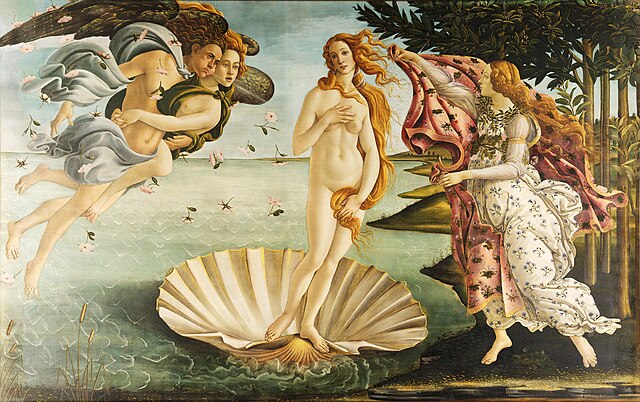Beauty is commonly described as a feature of objects that makes them pleasurable to perceive. Such objects include landscapes, sunsets, humans and works of art. Beauty, art and taste are the main subjects of aesthetics, one of the major branches of philosophy. As a positive aesthetic value, it is contrasted with ugliness as its negative counterpart.
Rayonnant rose window in Notre Dame de Paris. In Gothic architecture, light was considered "the source and actual essence of all that is beautiful", which was heralded in its design.
In Analysis of Beauty, William Hogarth depicts the effect of changing proportions and attempts to define what proportions are beautiful.
Greek mythology mentions Helen of Troy (left) as the most beautiful woman.
The Birth of Venus (c. 1485) by Sandro Botticelli. The goddess Venus (Aphrodite) is the classical personification of beauty.
Aesthetics is the branch of philosophy concerned with the nature of beauty and the nature of taste; and functions as the philosophy of art. Aesthetics examines the philosophy of aesthetic value, which is determined by critical judgements of artistic taste; thus, the function of aesthetics is the "critical reflection on art, culture and nature".
A man enjoying a painting of a landscape. The nature of such experience is studied by aesthetics.
Rainbows often have aesthetic appeal.
The Mandelbrot set with continuously colored environment







